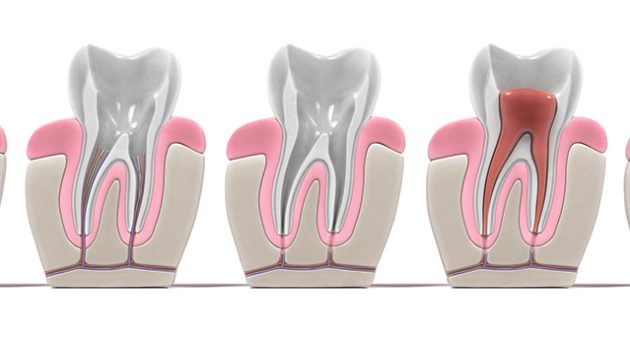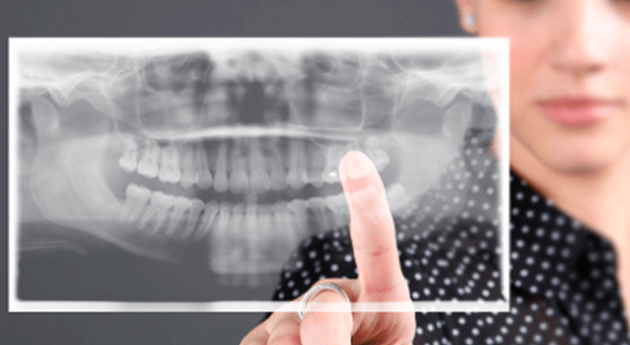DEVITALIZATION OF TEETH
SURGICAL CURETTAGE OF PERIAPICAL CYSTS
ENDODONTICS IS APPLIED TO THE TREATMENT OF THE ROOT OF THE TEETH
IN CASE OF ACUTE INFLAMMATION OR PULPITIS
WHEN AN OLD TREATMENT BECOMES IATROGENIC
ENDODONTIC TREATMENT HEALS SICK DENTAL ROOTS
WHAT IS ENDODONTICS?
DEVITALISATION OF TEETH FOLLOWING PULPITIS OR "TOOTHACHE
In a toothache, the inner cavity of the tooth that contains the pulp is under pressure due to inflammation. Indeed, this part of the tooth is not expandable. If there is inflammation, it increases the pressure inside the tooth, causing intense pain or necrosis of the dental pulp.
In the event that a cavity reaches the dental pulp, the tooth must be removed and replaced. The protocol applied is that of devitalization, also called endodontics. This medical procedure is usually followed by the placement of a crown.
TOOTH DECAY AND ROOT CANALIZATION
Caries is an attack on enamel and dentin by oral bacteria. If caught in time, it only requires a simple filling. However, some cavities require endodontic treatment and crown placement. This is the case when the decay is too advanced to perform a filling, but the extraction of the tooth is not necessary.
In order to place a dental crown, it is necessary to devitalize the tooth. This process takes place in several stages:
- Debridement of amalgam debris or loosening of posts to access the pulp;
- Dental pulp extraction;
- The replacement of the pulp by gutta-percha, an inert gum.
This operation can present complications when all the canals to be filled are not visible. These problems are now overcome by modern technology.

YOU ARE UNIQUE!
CLINICAL CASES OF ENDODONTIC TREATMENT CLINICAL OUTCOME OF RETREATMENT
Surgical endodontic treatments

Surgical curettage of periapical cysts
Caries is an attack on enamel and dentin by oral bacteria. If caught in time, it only requires a simple filling. However, some cavities require endodontic treatment and crown placement. This is the case when the decay is too advanced to perform a filling, but the extraction of the tooth is not necessary.
In order to place a dental crown, it is necessary to devitalize the tooth. This process takes place in several stages:
- Debridement of amalgam debris or loosening of posts to access the pulp;
- Dental pulp extraction;
- The replacement of the pulp by gutta-percha, an inert gum.
This operation can present complications when all the channels to be filled are not visible. These problems are now overcome by modern technology.
MODERN TECHNIQUES FOR ENDODONTICS
The Cone Beam 3D scanner
The 3D Cone Beam scanner is a very useful tool in endodontics. Indeed, it allows for a preoperative exploration in order to detect accessory canals that are difficult to see for the dental surgeon. This scanner allows to mitigate the possible complications of the devitalization of a tooth, each canal being well visible to be obstructed by the health professional.
The microscope and the laser
During the treatment, the control is performed under the microscope or with an intraoral camera with macroscopic zoom. The dentist will be able to check the dental pulp chamber and the canals. The laser is also used during the operation. It is used to sterilize the inside of the canals.
The 2D digital radiography of control
At the end of the endodontic procedure, a control X-ray is taken. The purpose of this is to confirm the success of the protocol; it verifies that the treatment has filled the entire root length of the devitalized tooth. Modern X-ray machines are now digital and considerably less ionizing than the old silver models.
The installation of a crown
When all the checks have been completed, the dentist can proceed with the placement of a crown to complete the tooth. This is done by sealing what is called an “inlay core“, or intraradicular post in the root. This element will serve as a base for the crown, while ensuring that the devitalized canals are sealed.




